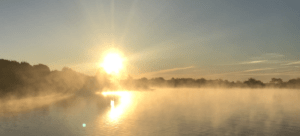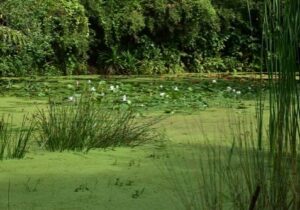By Lochow Ranch
Summer is officially here, and all lakes and ponds are at an increased risk of a fish kill.
While they are not necessarily common or completely preventable, it is good to be advised on what can happen and what to look for because lately we’ve had a sharp increase in fish kill calls.
By far, the overall most common cause of fish kills is lack of oxygen and summer is the deadliest season.
During the summertime as air temperature and length of day increases, most lakes (if not fed by a well) begin their annual drop in water level.
Surface water becomes super-heated during the day and since water density decreases as temperature increases, stratification or separation between water masses at a thermocline occurs.

That is the cold water you feel at six or so feet deep. Little to no mixing occurs below the thermocline, which results in the water below the thermocline becoming anoxic or depleted of oxygen.
Depending on the surface area to volume ratio of your lake, this stratification is currently occurring to some degree, except in lakes that have appropriately sized subsurface aeration systems.
These conditions put lakes at an increased risk of a fish kill.
Other anoxic conditions can occur when weather changes drastically, for example during big rain events or very windy days lakes can experience a turnover. This normally happens because high amounts of rain can super-cool surface water causing it to sink, which causes the anoxic bottom water to come to the surface.
The combination of sharp changes in temperature and low oxygen levels can cause a fish kill. Small deep lakes with large watersheds have the highest risk of a turnover-related fish kill.
Some other causes of fish kills are:
- very dense plankton blooms or green water
- blue-green algae blooms, which produce toxins
- weed decay, which uses oxygen
- excessively dense weed growth, which consumes too much oxygen overnight
Lakes that have dense phytoplankton blooms are also at risk of a fish kill. If the phytoplankton biomass exceeds a critical level there can be a simultaneous rapid die off. The resulting bacterial oxygen usage from the decomposition of algal cells can reduce oxygen levels low enough to kill fish.
Extended periods of overcast skies and increased turbidity from rain events can also cause a rapid die off of phytoplankton.
All lakes, including those with subsurface aeration, are at risk of this type of fish kill. Closely monitoring water color and taking visibility readings using a Secchi disk can help with management decisions. Assessing summer kill causes and weed control are among the most vital management duties.
Certain corrective measures can be taken to reduce phytoplankton density but must be done so proactively.
As always, please let us know if you notice something “off” with your lake, especially during these hot still days.
Why Choose Lochow Ranch for Pond & Lake Management
Serving Texas, Oklahoma, Arkansas and Louisiana, Lochow Ranch Pond & Lake Management proudly puts more than two decades of experience to work for you. Our team includes biologists, technicians and other professionals with deep expertise in pond and lake management services.
Check us out if you are considering building a lake, looking for pond stocking services, to buy fish for a pond, or getting professional pond management and maintenance or fishery management. Our services include lake design, pond construction, pond renovation, pond water testing, electrofishing, pond stocking, control of pond weeds, and pond liming and fertilizing. Let us help you build your dream pond that will delight your family and friends for generations to come.

Recent Comments